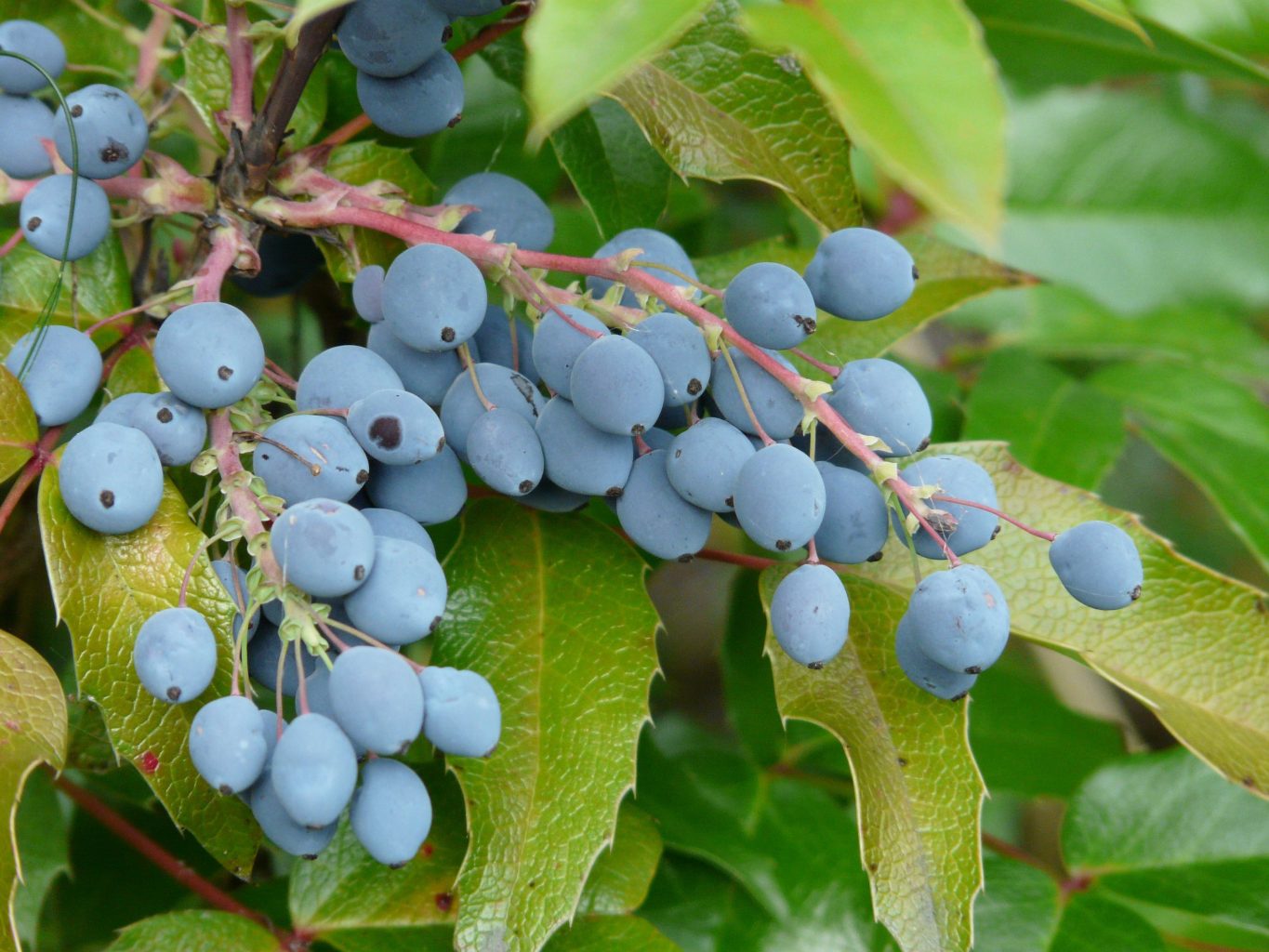
The colorful Oregon Grape of the genus Mahonia is a part of the barberry family (Berberidaceae), although some botanists classify them as genus Berberis. The name Mahonia is derived from an American nurseryman, Bernard McMahon, who immigrated from Ireland and seems to be the most well-known classification (although either may be applied).
There are 3 species native to the Pacific Northwest (region of North America west of the Rocky Mountains): tall Oregon grape (Mahonia aquifolium), Cascade (long-leaved) Oregon grape (Mahonia nervosa) and Low (or creeping) Oregon grape (Mahonia repens).
The long-leaved (Mahonia nervosa) is often mistaken for English Holly. The Invasive Species Council of British Columbia in Canada strongly suggests planting long-leaved Oregon grape rather than English Holly, which they’ve classified as an invasive species. The Council refers to long-leaved Oregon grape as “a very tough little Pacific Northwest plant suitable for most gardens”.
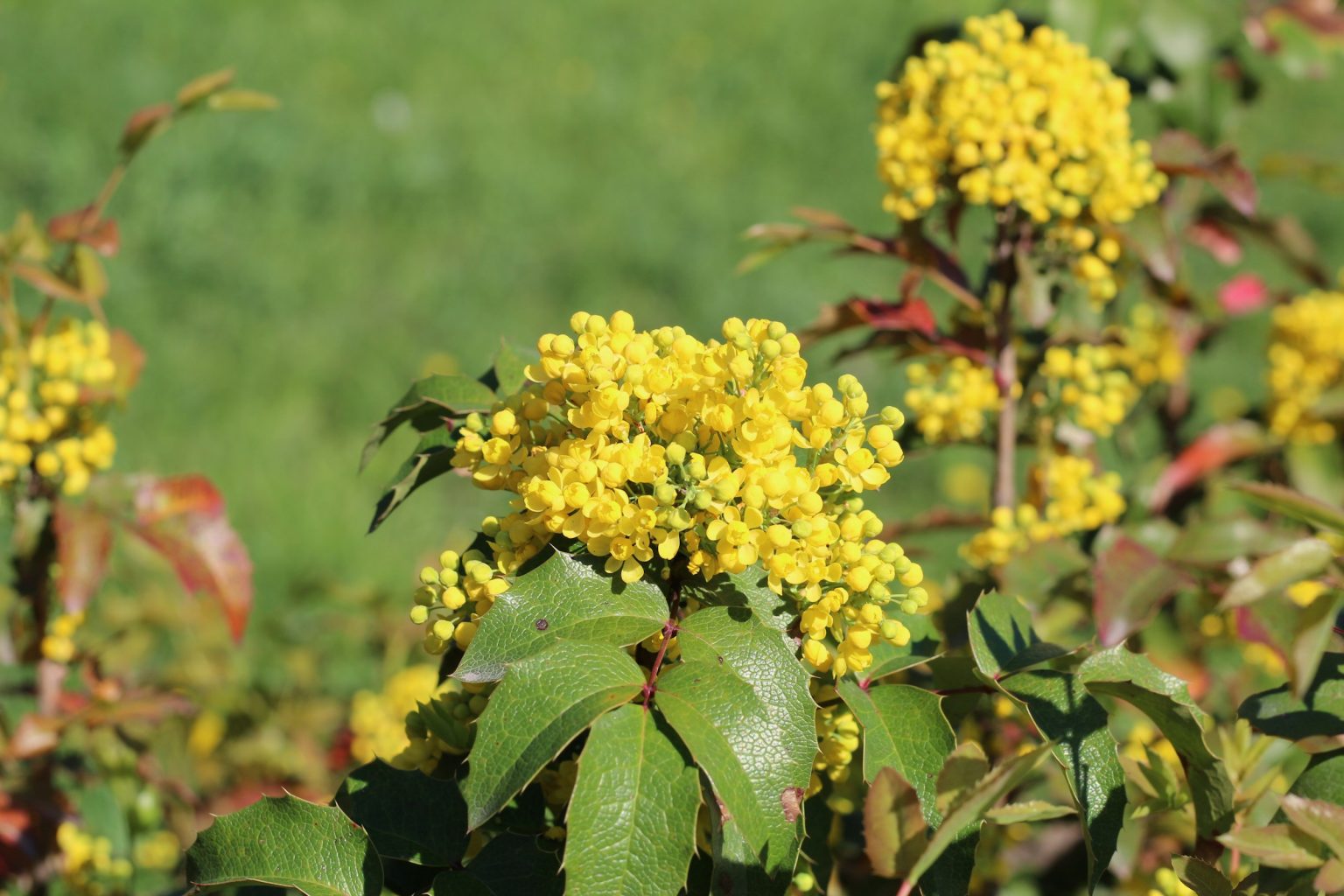
Mahonia aquifolium (tall Oregon grape) is a species of evergreen shrub which can grow up to 6 feet tall and 3 feet wide. Aquifolium means “water leaf”, which probably comes from their lustrous, wet-looking surfaces. A defining characteristic of Mahonia aquifolium are the sharp spines along the leaf edge. Even though referred to as an evergreen, the foliage of Oregon grape begins as crimson, matures to emerald green and then to burgundy-bronze in the fall and winter.
The summer-green leaves contrast beautifully with the golden yellow flowers, which eventually become frosty-looking blue berries. Tall Oregon grape grows well in places that blueberries, azaleas and rhododendrons live. They are found in open woods, mostly west of the Cascades from British Columbian down through Northern California, offering ornamental and visual interest throughout all four seasons in a variety of conditions. It tolerates full shade and full sun (although the leaves may scorch in intense heat).
In a Harrowsmith magazine, tall Oregon grape made the #1 position in their “9 Must-Have Plants for Winter Interest” article. A slow-growing shrub, it can live up to 30 years in ideal conditions.
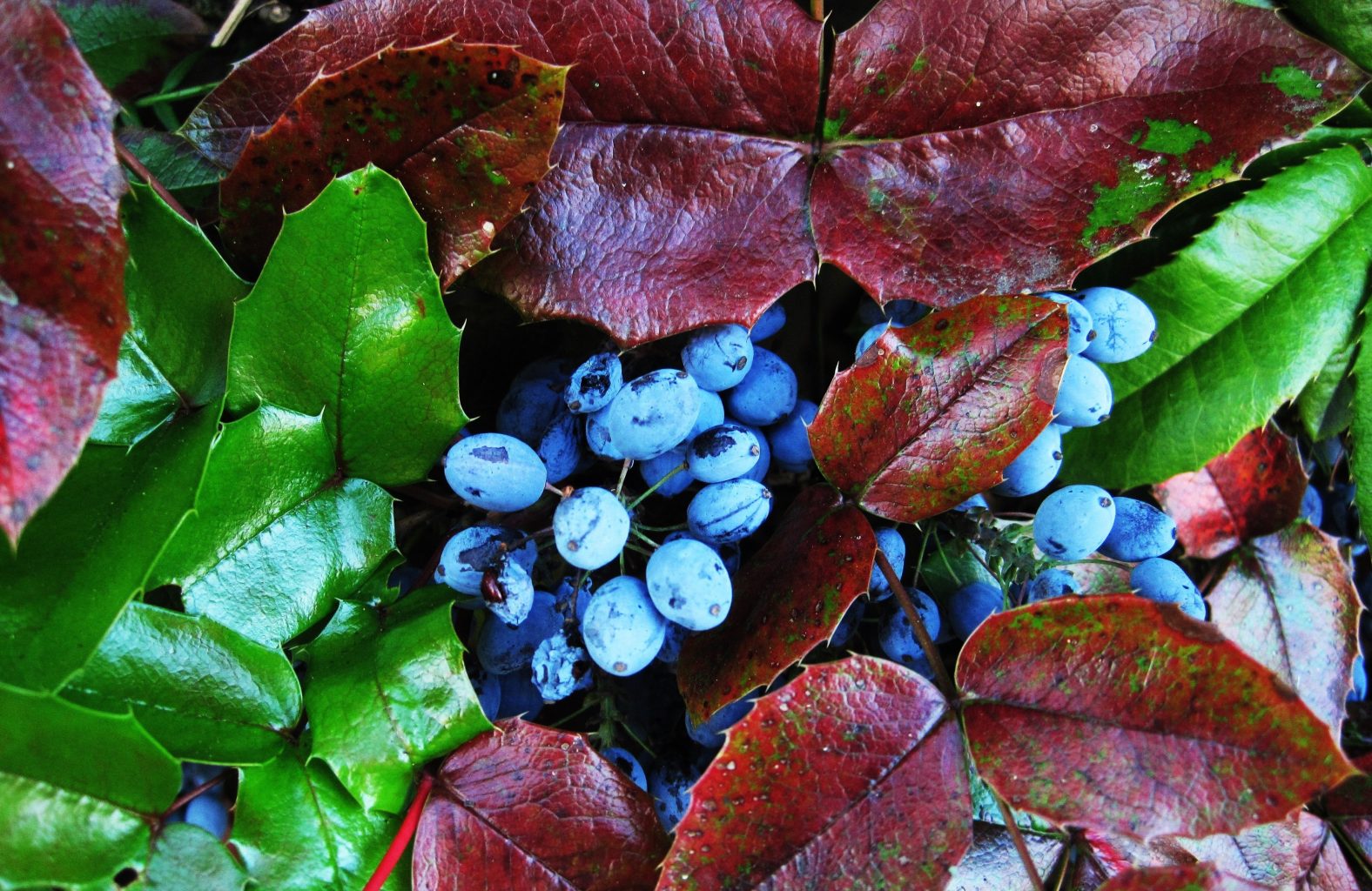
Oregon grape held cultural significance for the Indigenous peoples of the Pacific Northwest. It was considered a sacred plant used in traditional rituals and ceremonies and as a valuable source of food, medicine and natural dye.
The interest in natural dyes has recently rekindled as an answer to finding sustainable and eco-friendly alternatives to synthetic varieties. Oregon Grape’s deep blue pigment has been extracted successfully to provide beautiful color to wool and other natural fibers.
As studies into medicinal properties of plants continues, there is enthusiasm around Tall Oregon grape. It has been found to contain natural antibiotic properties against bacterial and fungal infections as well as compounds which act as anti-inflammatories and anti-cancer agents. Oregon grape also has an interesting adaptogenic characteristic which allows it to help in reducing stress (which keeps the body balanced) via its ability to support the adrenal glands. As always, it is vital to consult your health provider prior to using Oregon grape as a health supplement, especially if you are taking any medications.
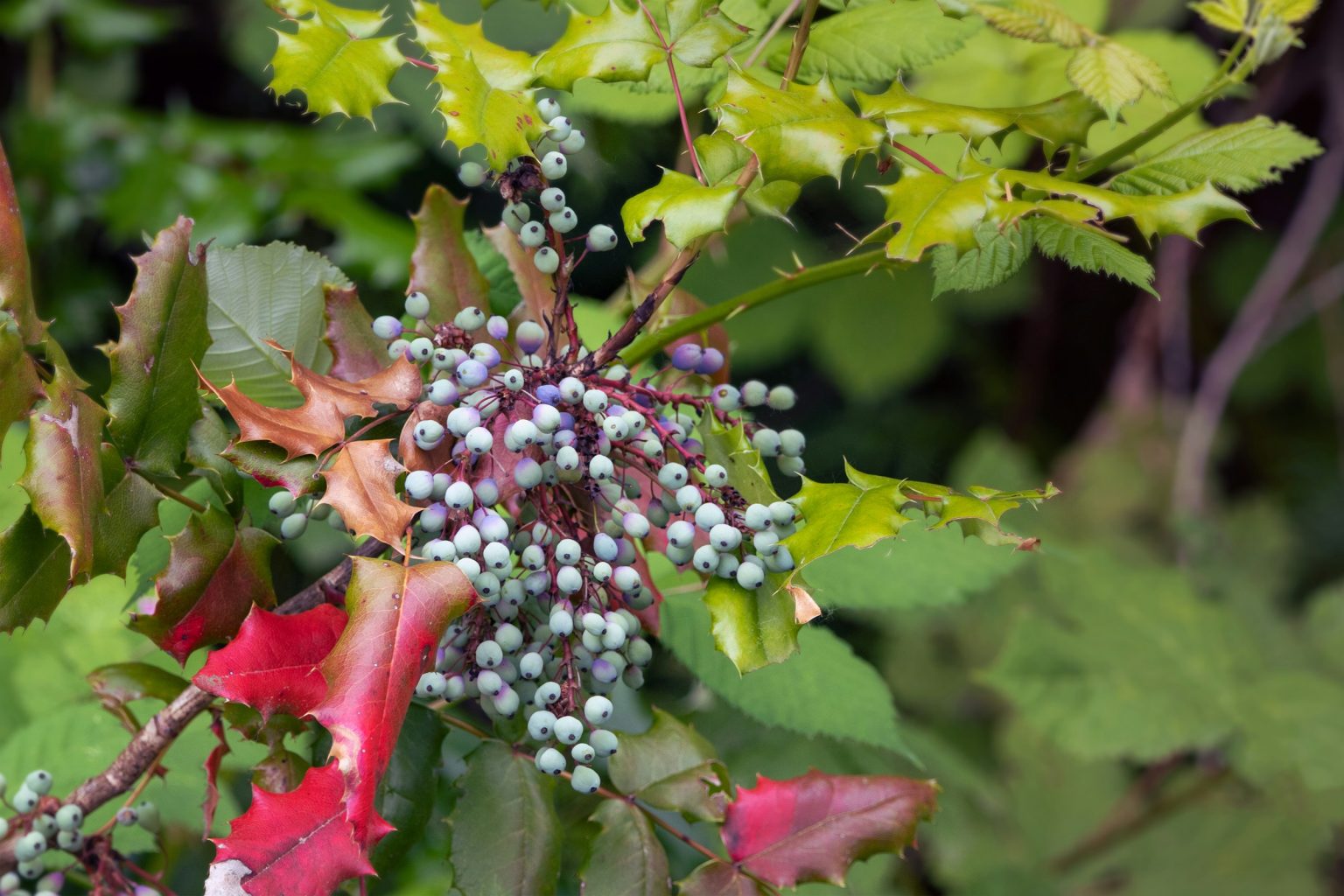
Despite its name, Oregon grape produces berries, not grapes. The grape-shaped berries mature in mid-to-late summer, showing as ripe when they yield slightly to a gentle squeeze.
The berries contain a lot of natural pectin which works nicely in jelly- or wine-making (in combination with other berries or on their own). Oregon grape berries are very bitter-tasting (as in face-twisting bitter) and the bitterness has another unexpected twist:
Our modern palate values (and may even be addicted to) salty and sweet – so much so that we seem to have discarded bitter plants from our diets. What our ancestors found (but may not have had the scientific explanation for) is when your taste buds come in contact with the bitter taste, the messages sent to your brain cause many digestive secretions to increase discernably. The increased secretions cleanse, enliven and clarify the body, ultimately leading to a more efficient digestive system.

Cascade Oregon grape or mahonia nervosa (pictured above) is also called Long-leaved, Low or Dull Oregon grape. While Tall Oregon grape (mahonia aquifolium) has 5 – 9 leaflets per leaf, the Cascade species has 9 – 19 leaflets per leaf. Apparently the “nervosa” portion of the name refers to the veins on the underside of the leaves which fan out rather than continue as one central vein as the “aquifolium”.
The Cascade Oregon grape grows closer to the ground, commonly under 3 feet high. They seem to like the shade and moisture within forests. Where they both grow in the same area, you can often find the Cascade (Nervosa) species on the north side of a hill and the Tall Oregon grape (Aquifolium) on the south side.
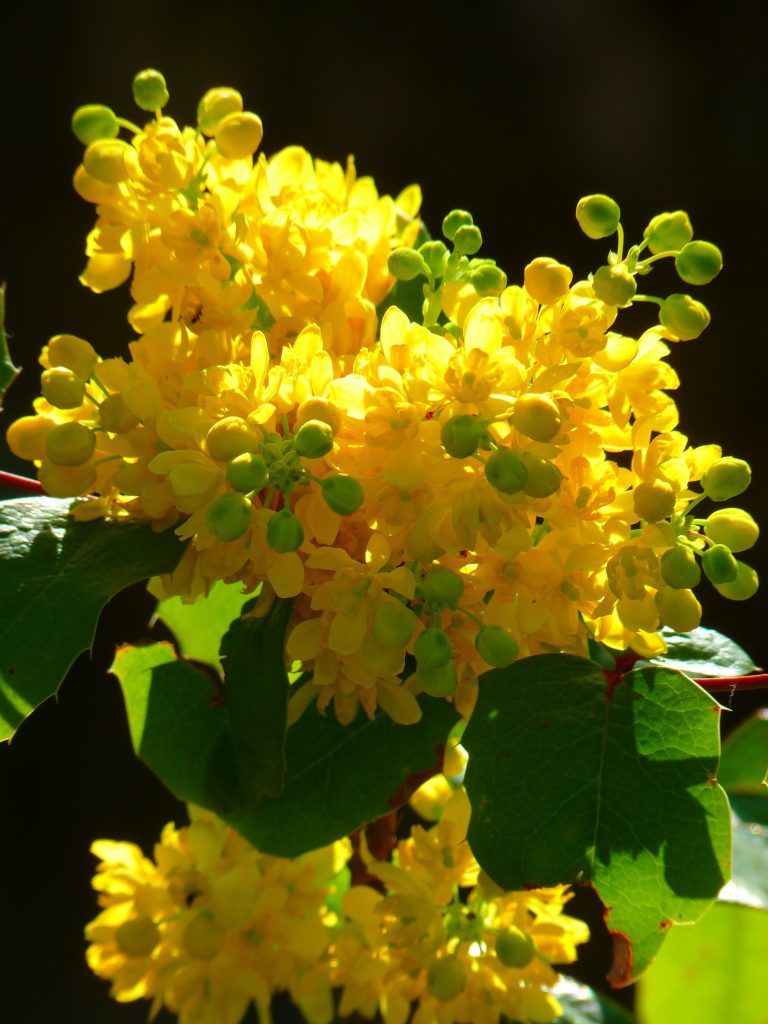
After reading about aesthetically pleasing and practical ways to connect with Oregon Grape to this point, we’ll end with some thoughts about the inherent wisdom it may offer for those who enjoy contemplation or meditation.
Folklore claims that 3 branches of Oregon grape on the threshold would keep enemies away, suggesting a “protective” quality to the Oregon grape. On a the purely physical level the protective quality is true, Oregon grape can be planted under vulnerable windows or as a hedge because the prickly spines on the leaflets tend to deter those who would try move through them. Furthermore, this powerful shrub often grows among some similarly powerful allies such as poison ivy, poison oak and blackberry.
In both cases, the uniting of many Oregon grape plants to form a hedge or Oregon grape uniting with other plant allies, the power of the protection is found in teamwork with those of “like mind, purpose or values”.
